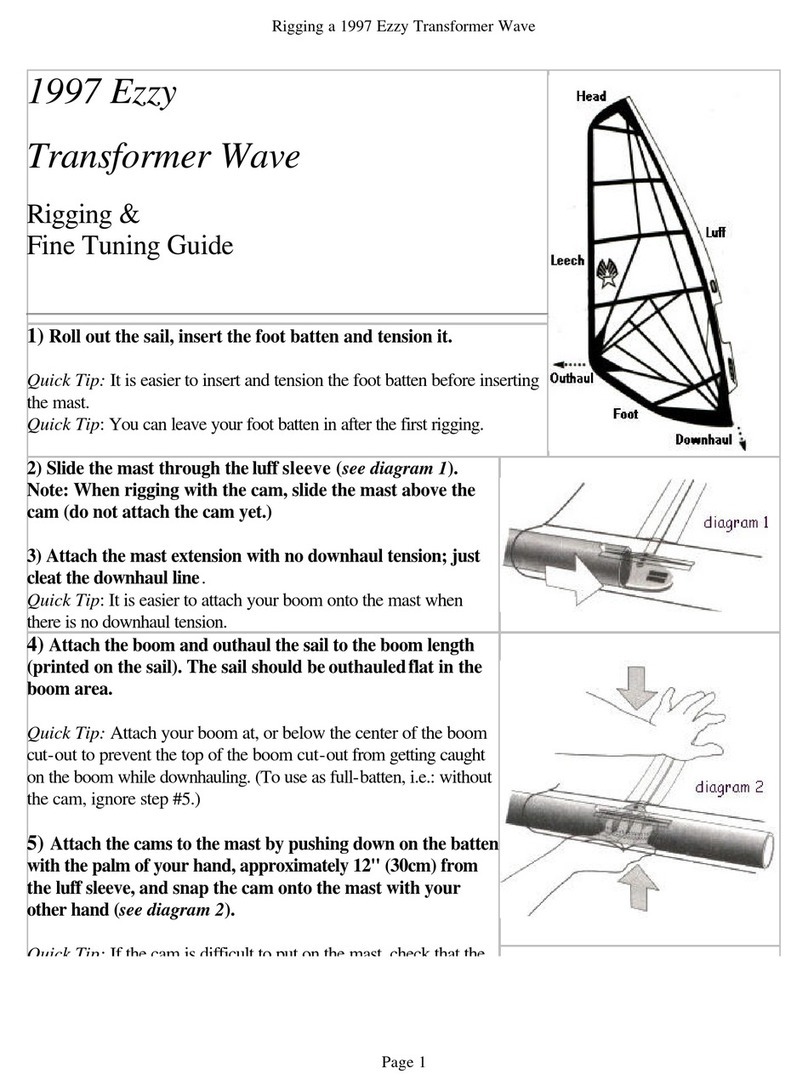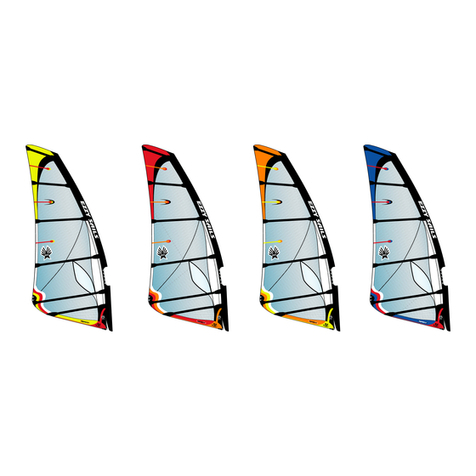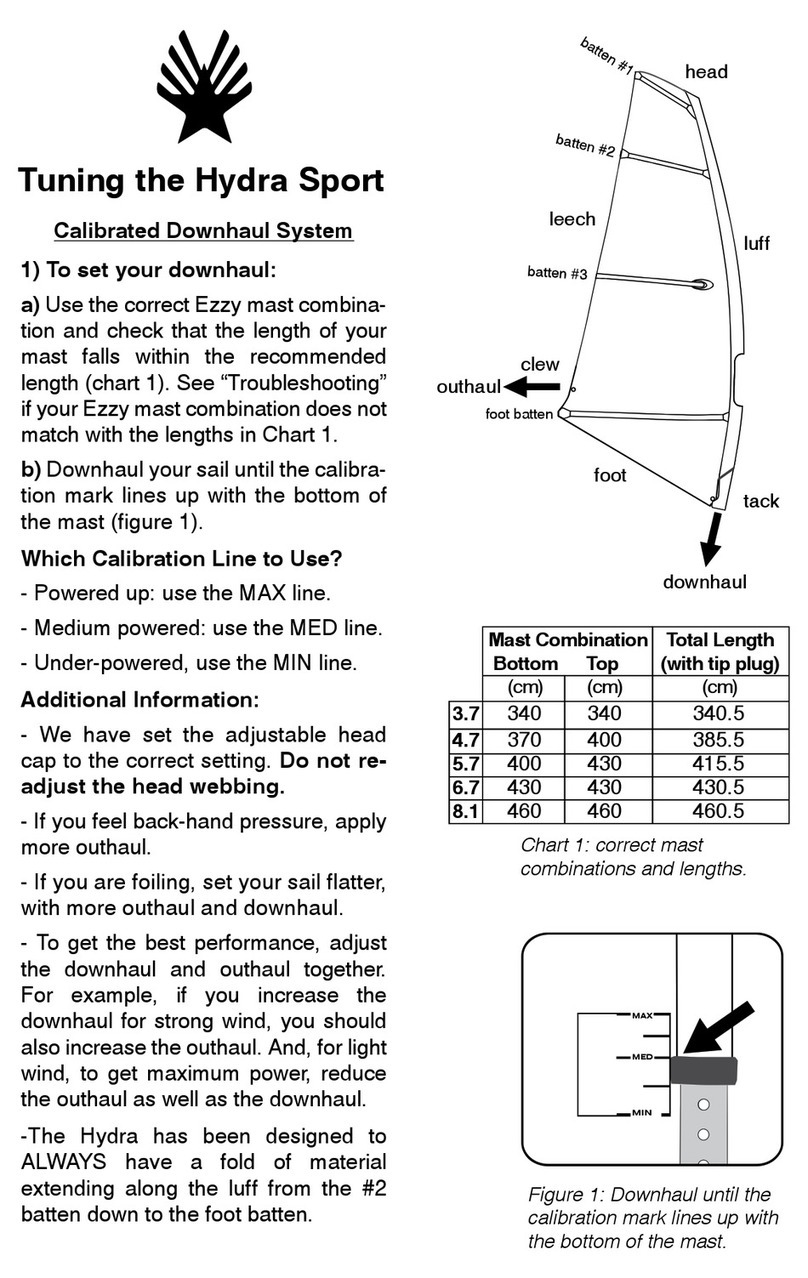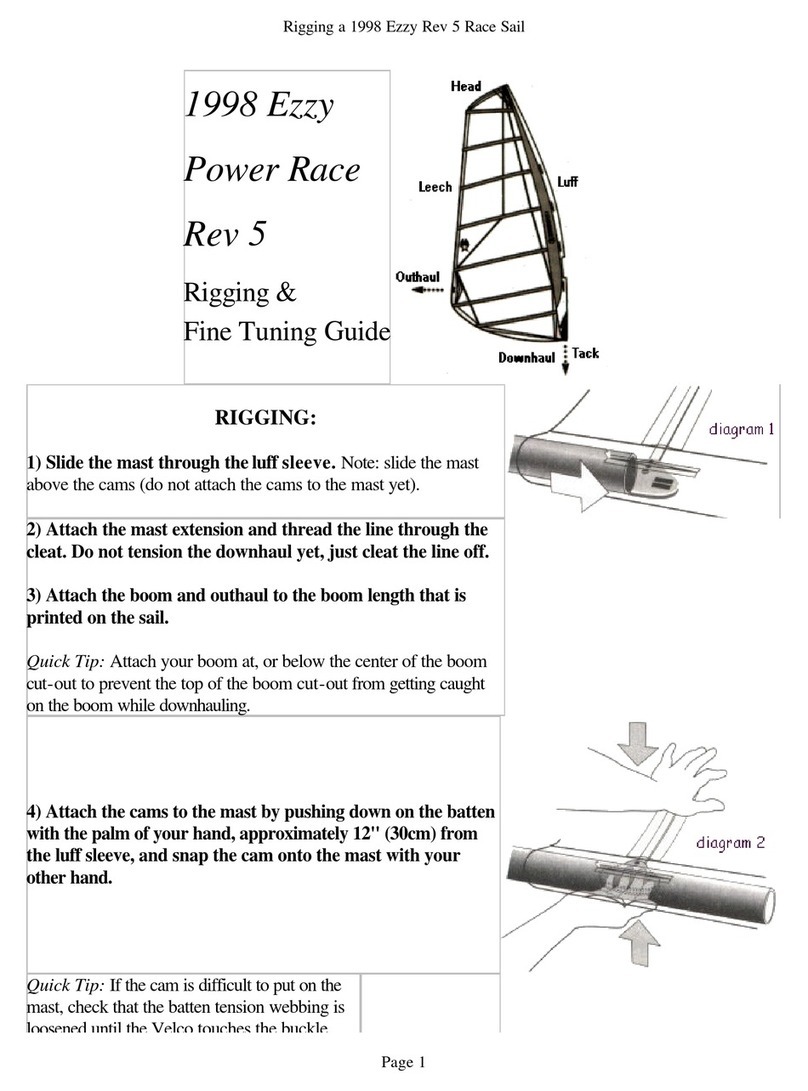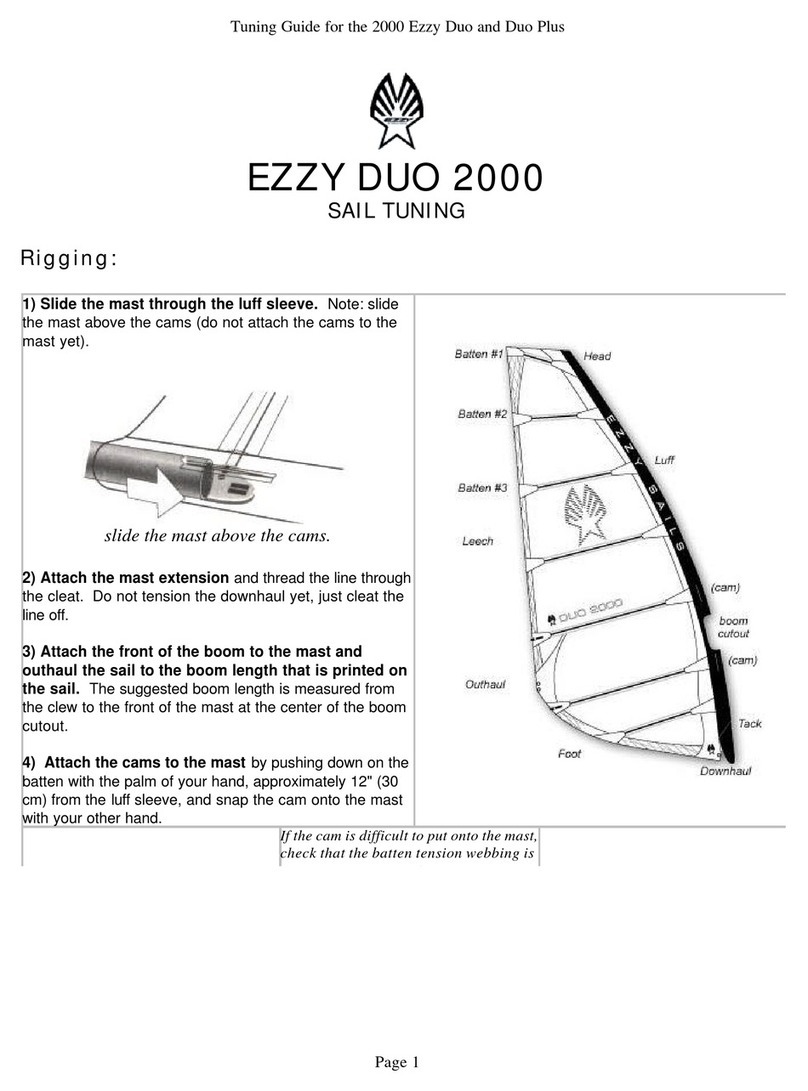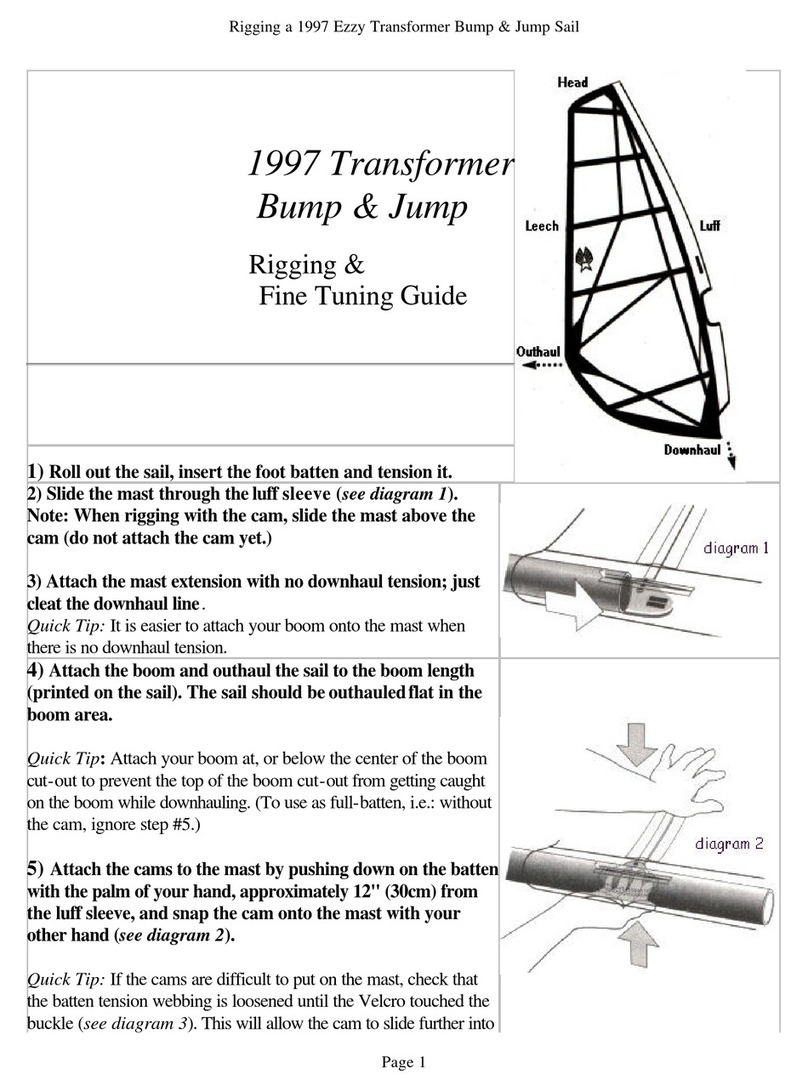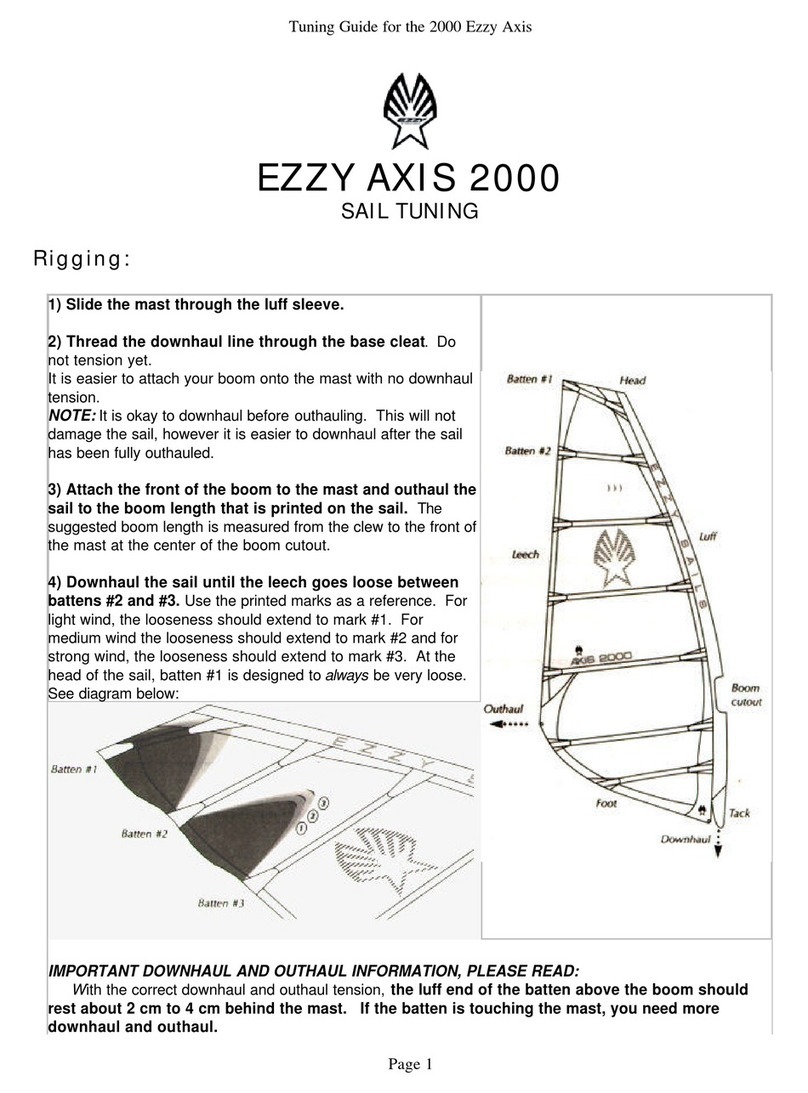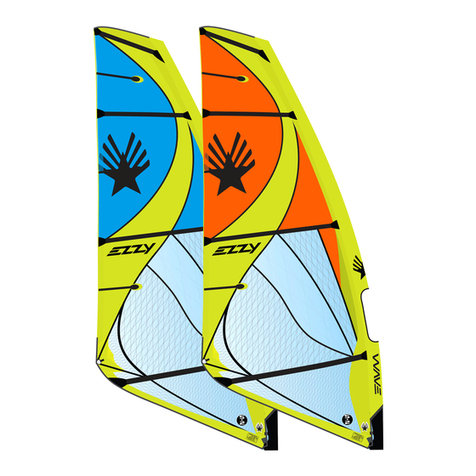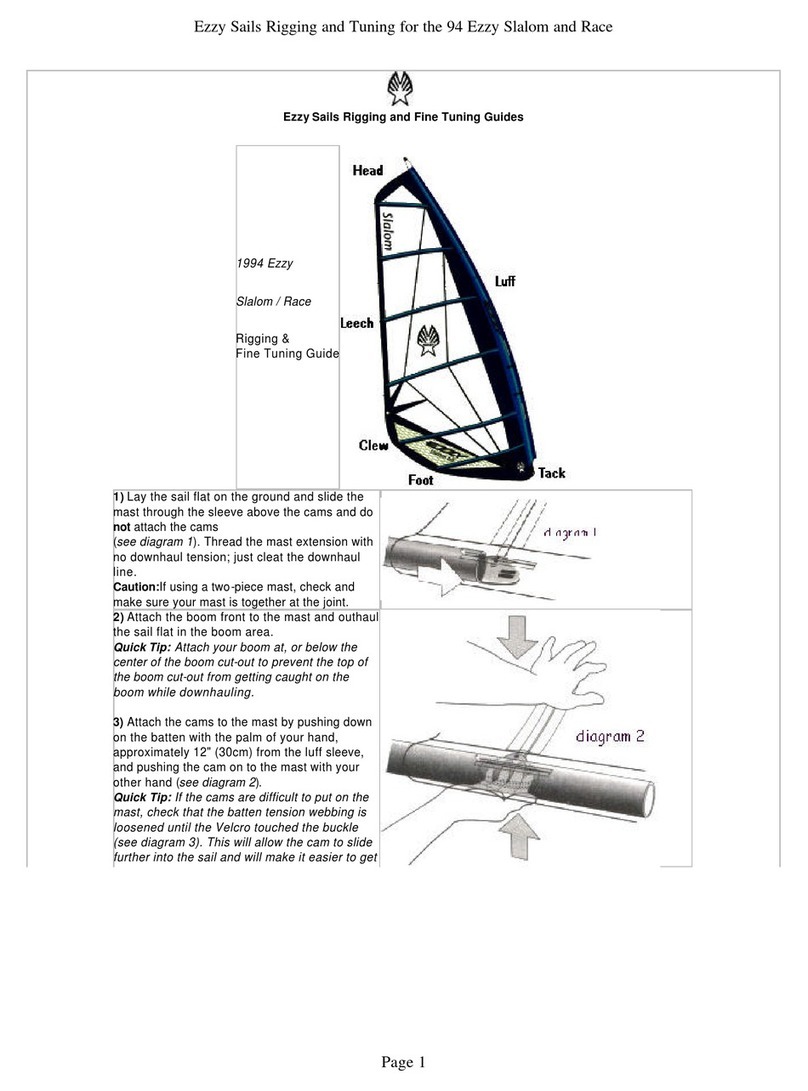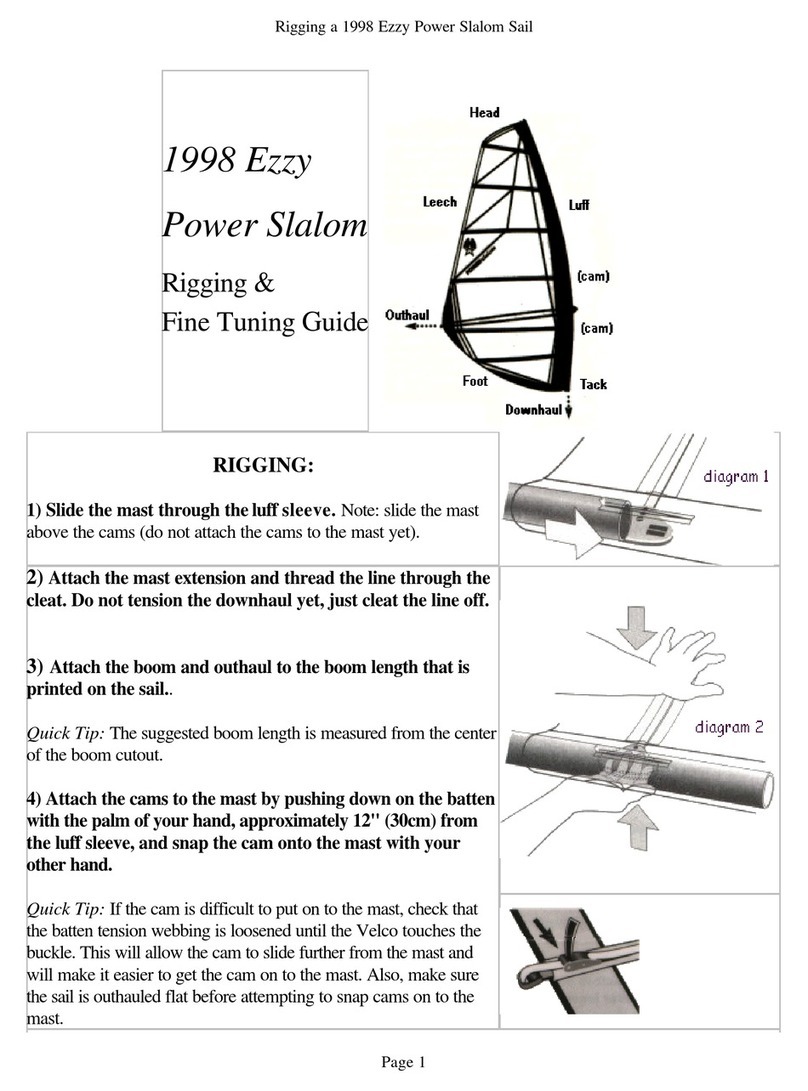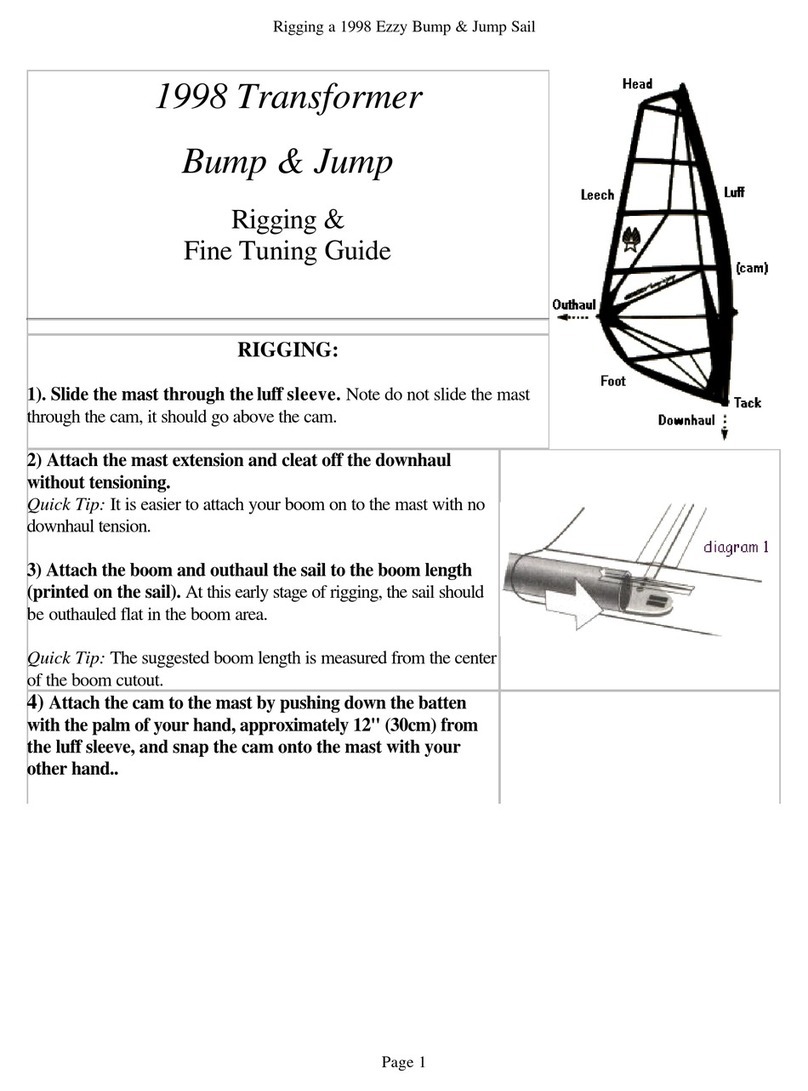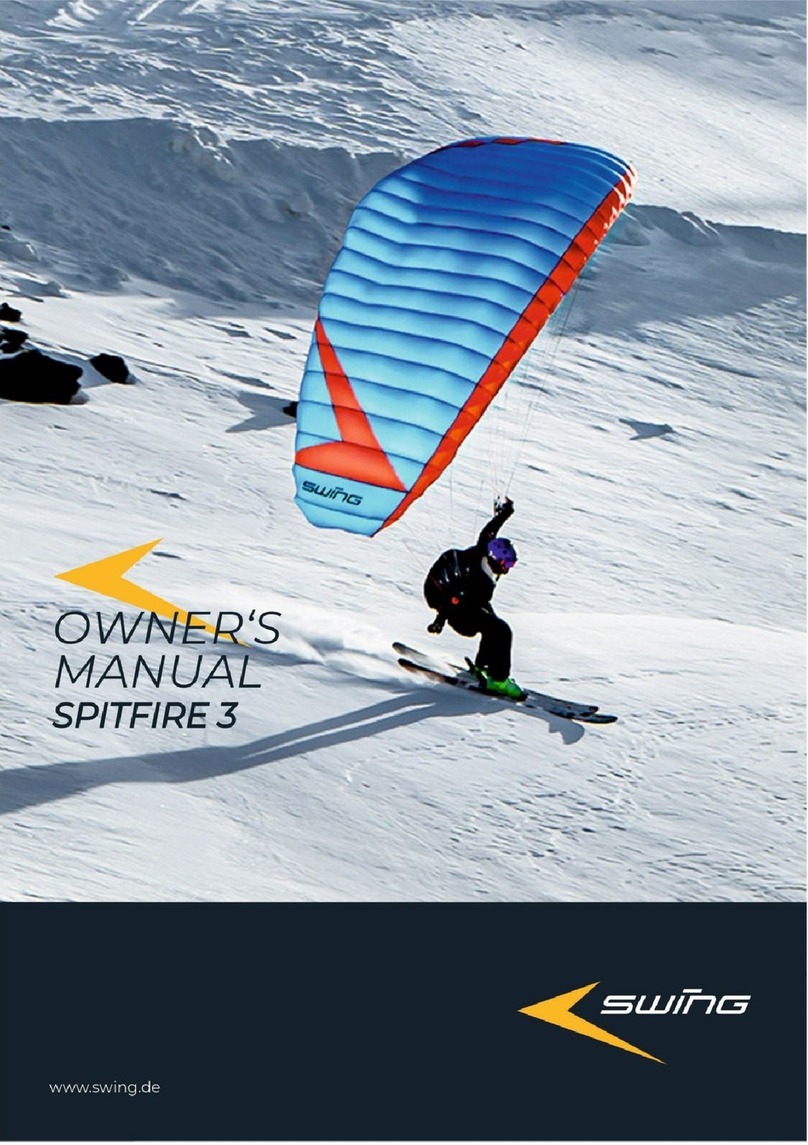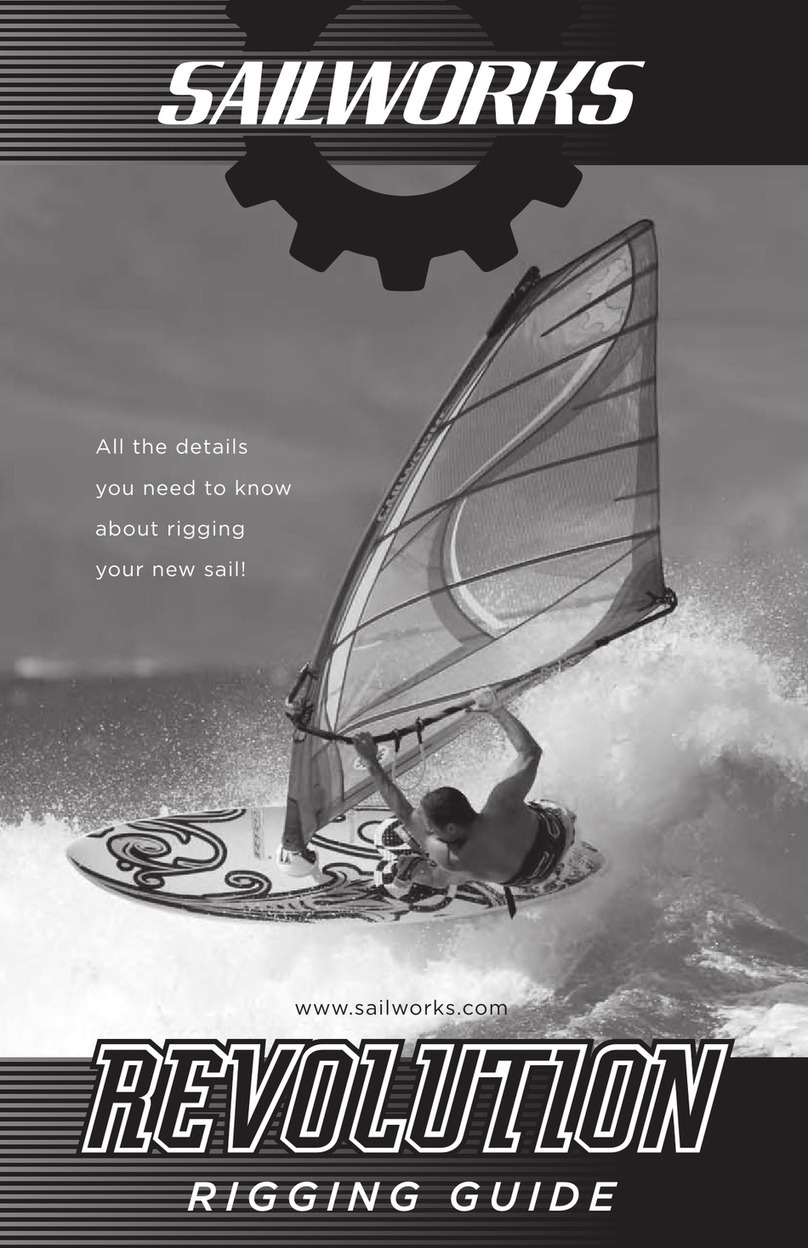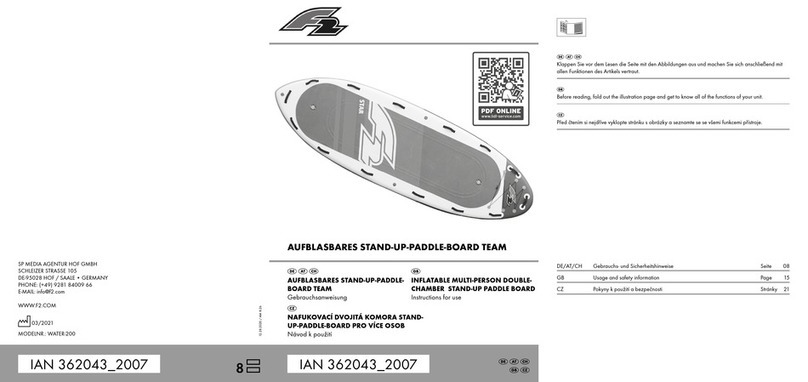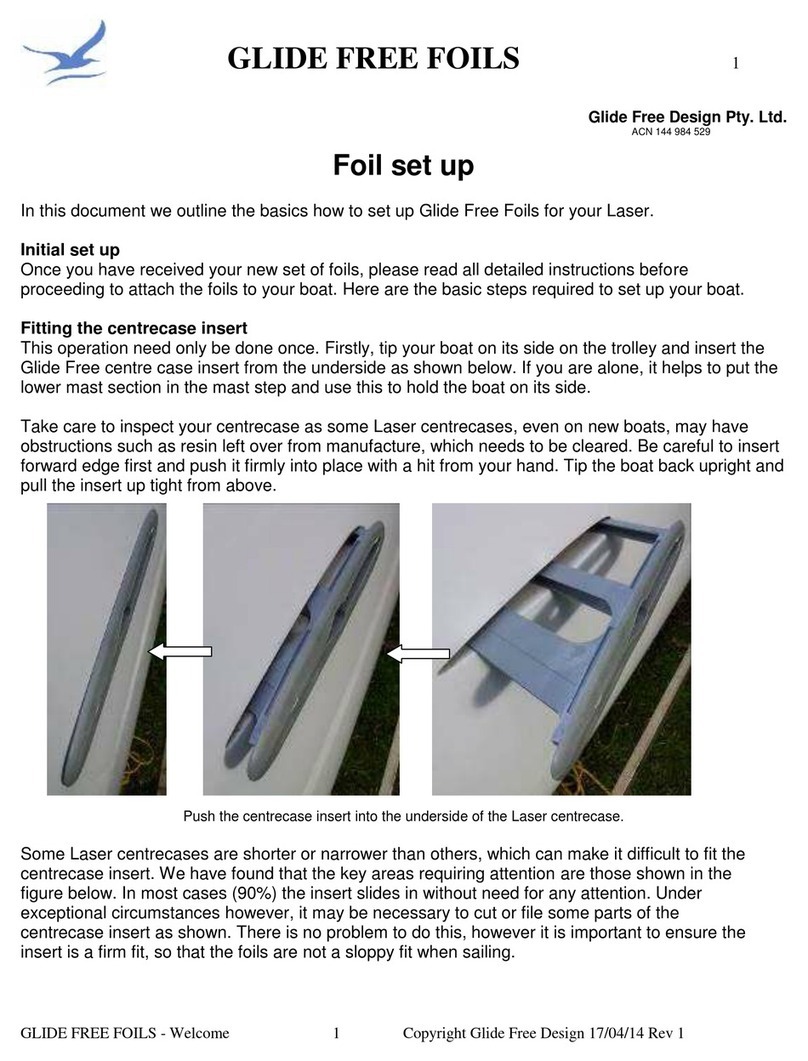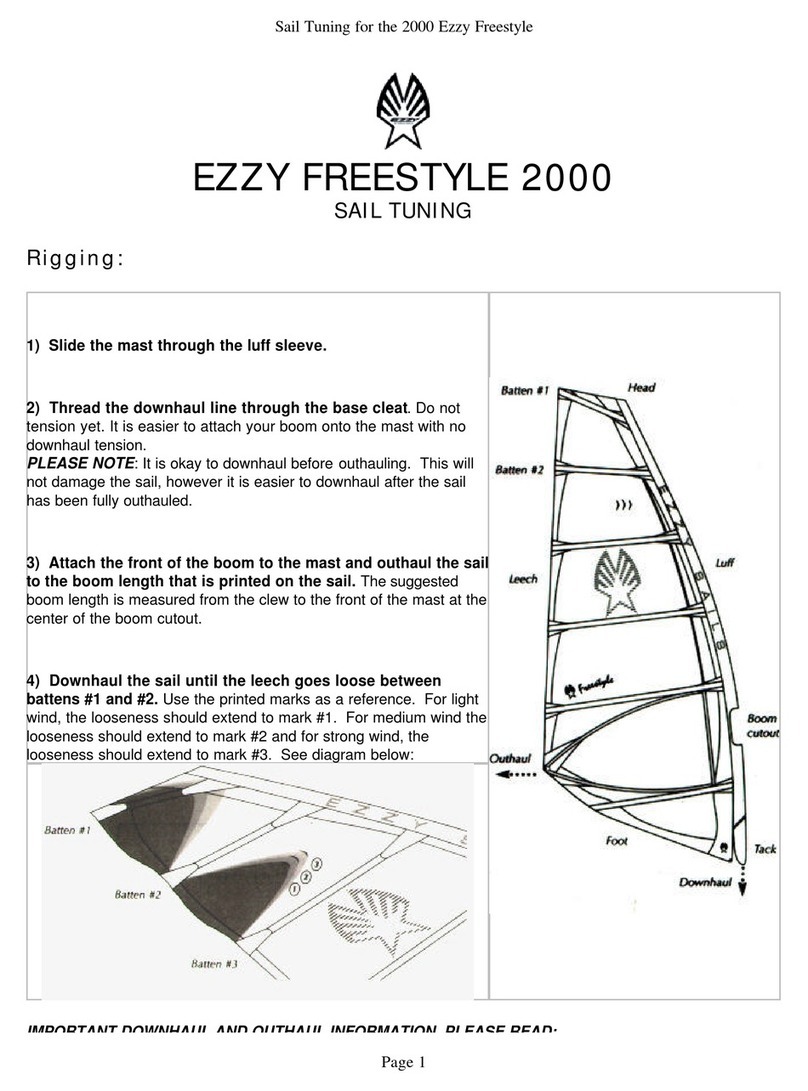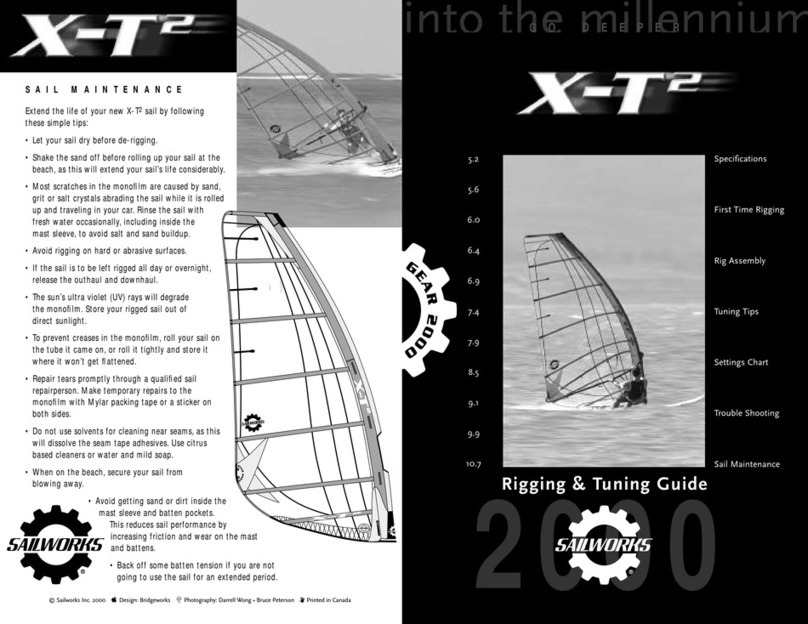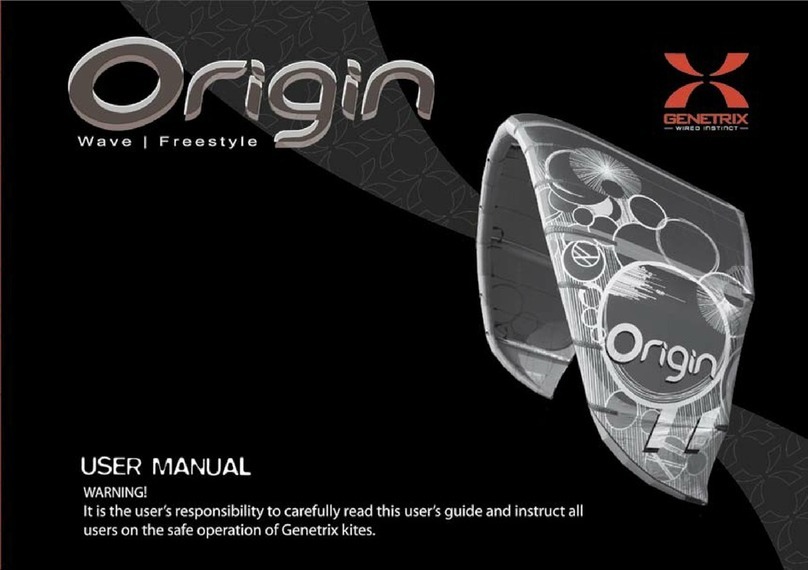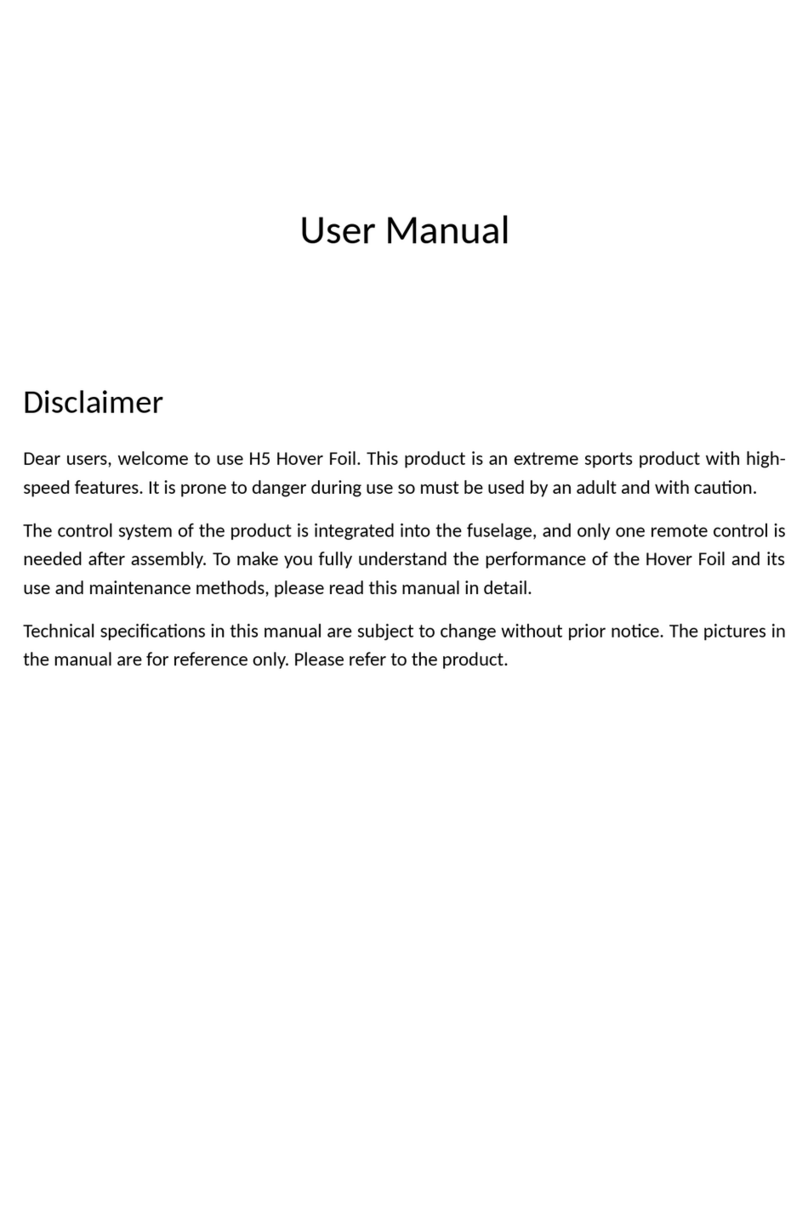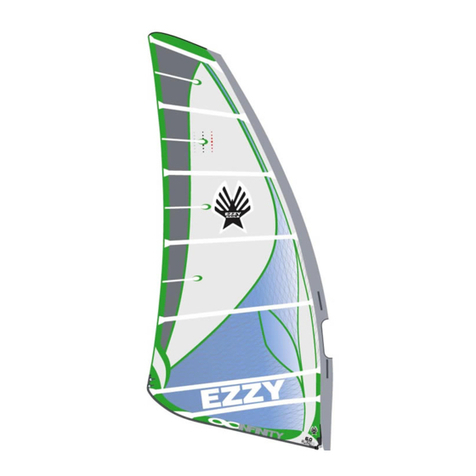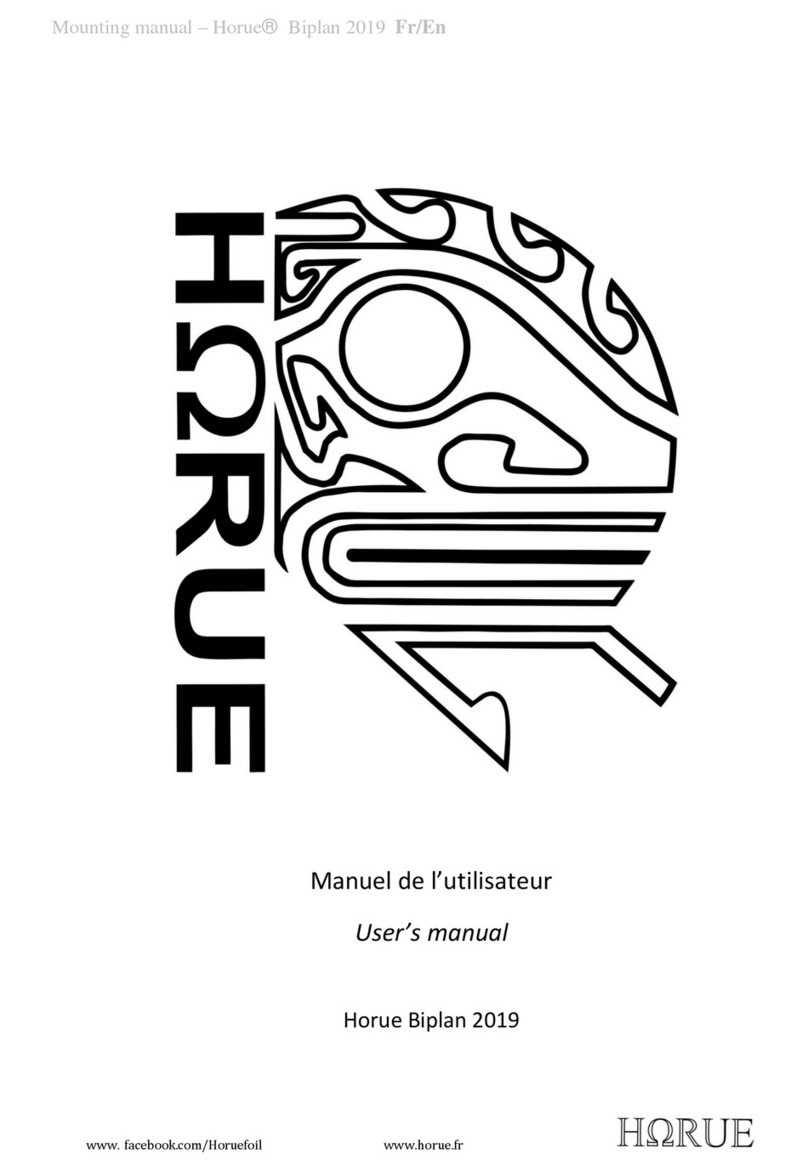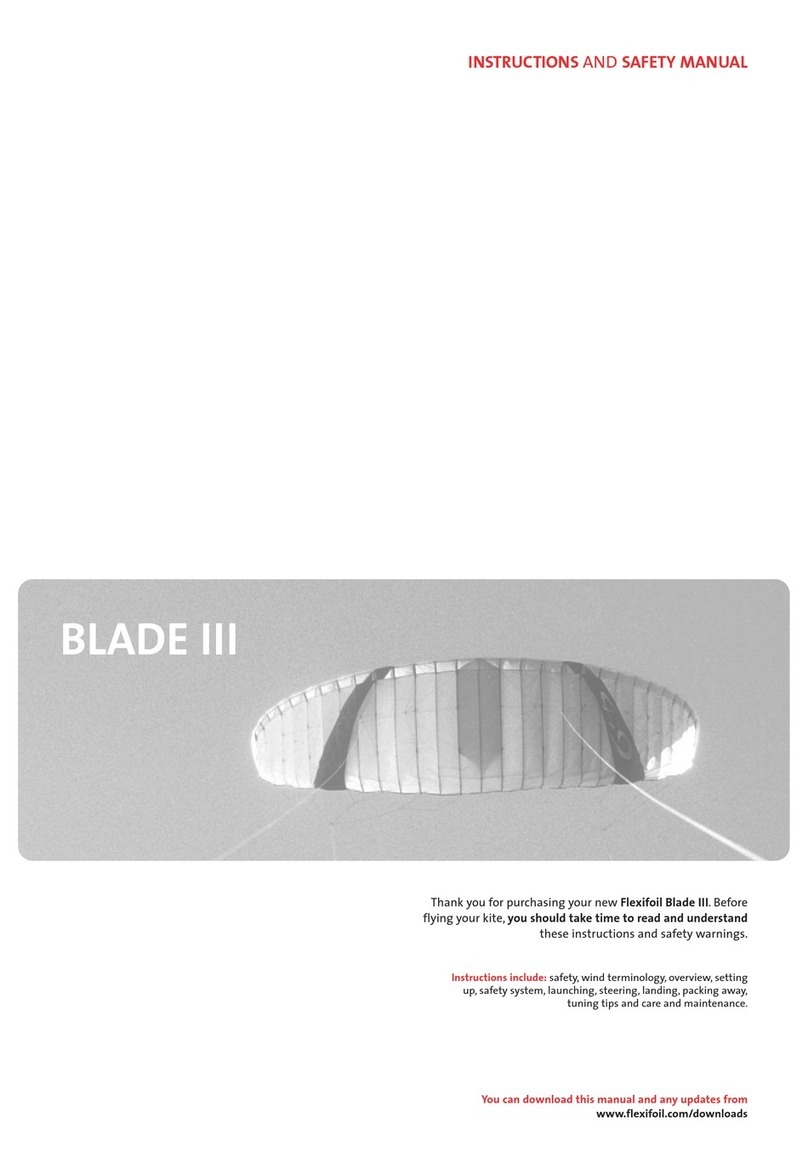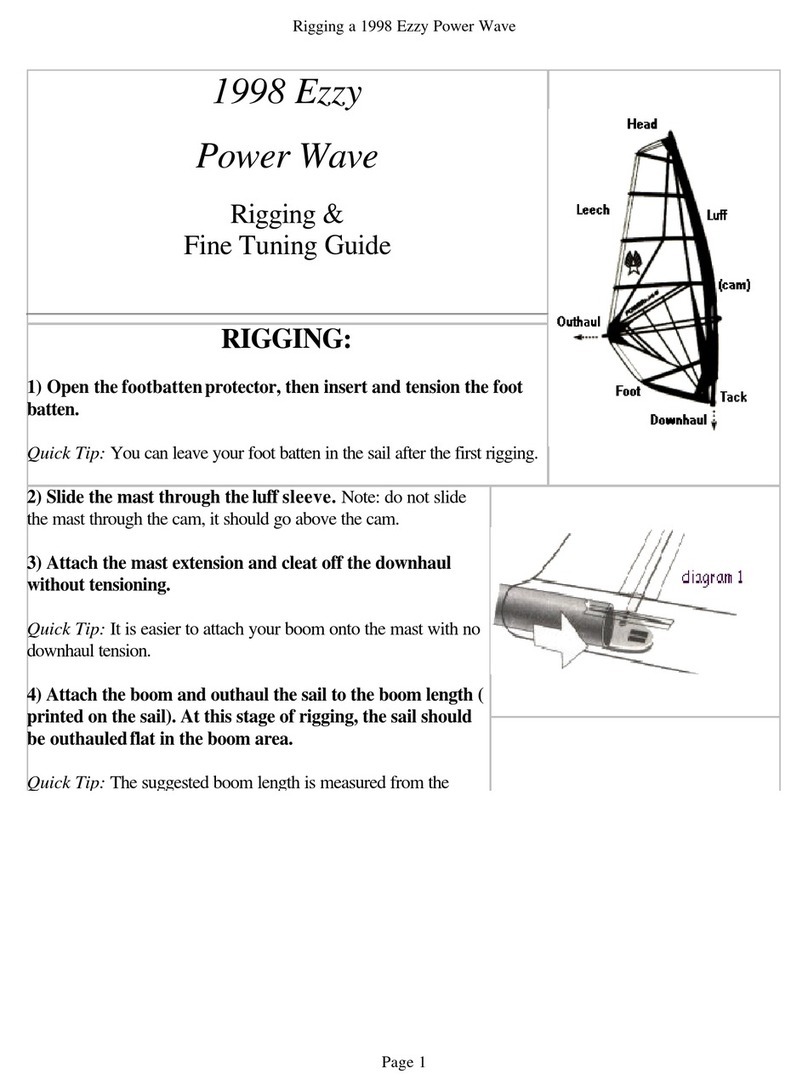
Fig. 4: Tension tack strap and
store downhaul line in mesh pocket.
Figure 2: With the leech lying
on the ground, downhaul until
the looseness extends to the
four dots.
Figure 3: Move the calibration
gauge so the medium mark
lines up with the bottom of
the mast.
2) Setting the Downhaul if You Don’t
Have the Correct Ezzy Mast:
a) First, make sure you have NO outhaul.
b) Then, downhaul until the looseness on
the leech extends to the four dots printed
between battens #2 and #3 (figure 2).
Note: to see the looseness, the leech at
the dots must be touching the ground.
c) This is the medium wind setting.
d) Next, move the downhaul gauge at the
bottom of the sail so that the medium
mark of the gauge lines line up with the
bottom of your mast (figure 3).
e) The downhaul gauge is now positioned
correctly. From now on, to set your down-
haul, just downhaul until the the gauge
lines up with the bottom of your mast.
Note: When observing the looseness at
the dots for this exercise, the sail must
have no outhaul. When you apply outhaul
the leech tightens.
Additional Information:
- Do not over-downhaul. Too much down-
haul will make the sail unstable.
-If you feel back-hand pressure, apply
more outhaul.
- If you change to a different mast, you
will need to repeat steps a) through e).
3) Tension the Tack Strap
After downhauling, thread the tack strap
through the buckle and pull the strap until
the foot gets tension. You will see a small
wrinkle running out from the corner of the
sail. Then, wrap the end of the tack strap
around your mast extension and loop the
end of the tack strap under itself and
secure the strap with the velcro. Store
your downhaul line in the mesh pocket
located inside the pad (fig. 4).
Med
Min
Max
wrinkle
tension
store line in
mesh pocket
